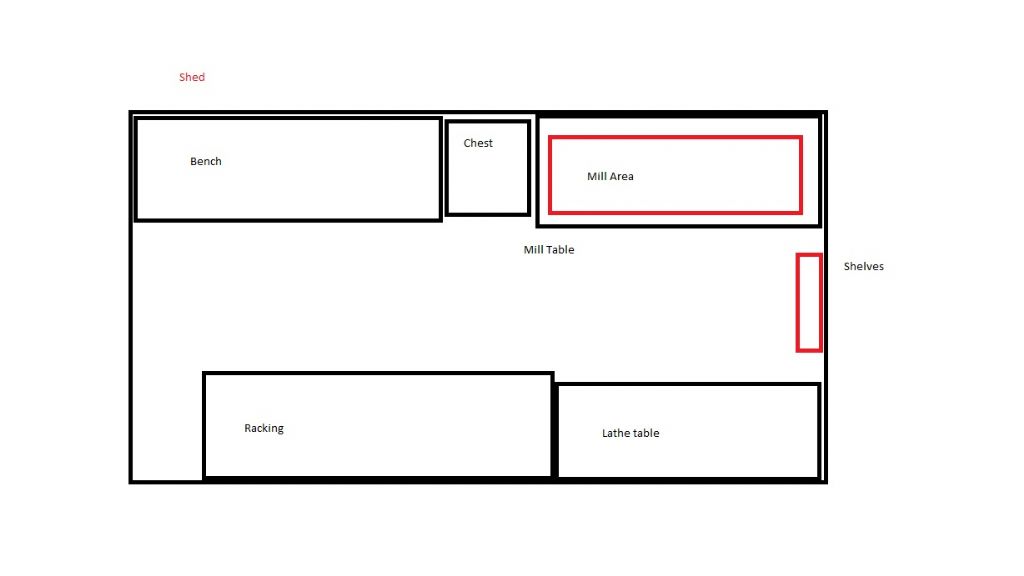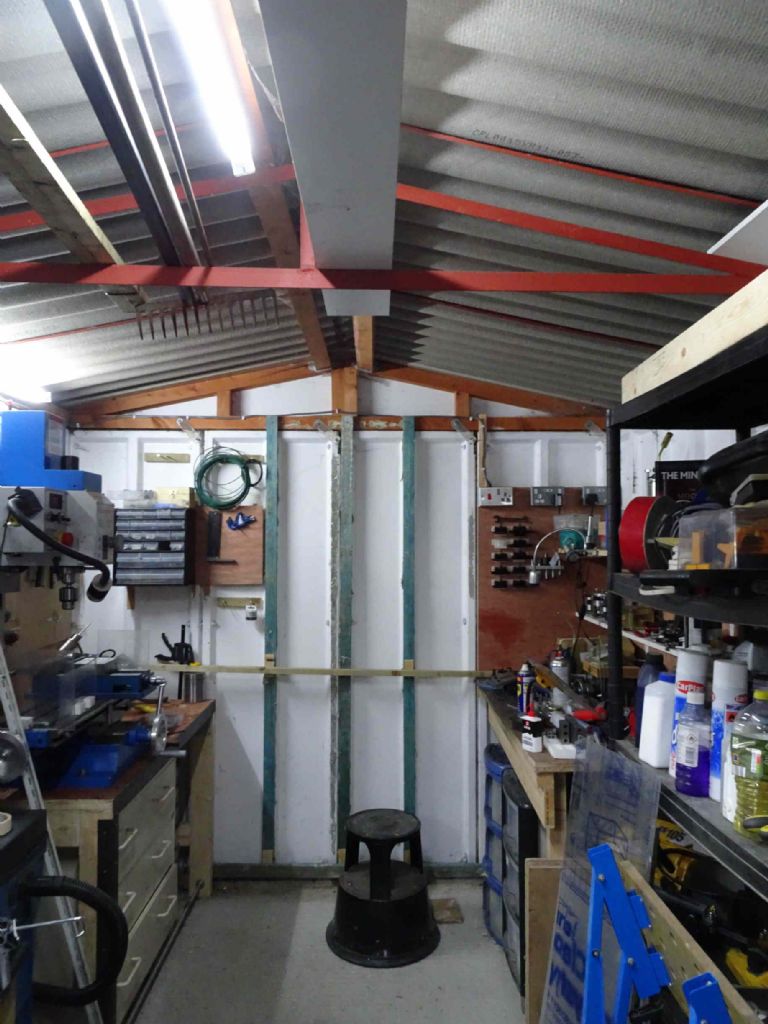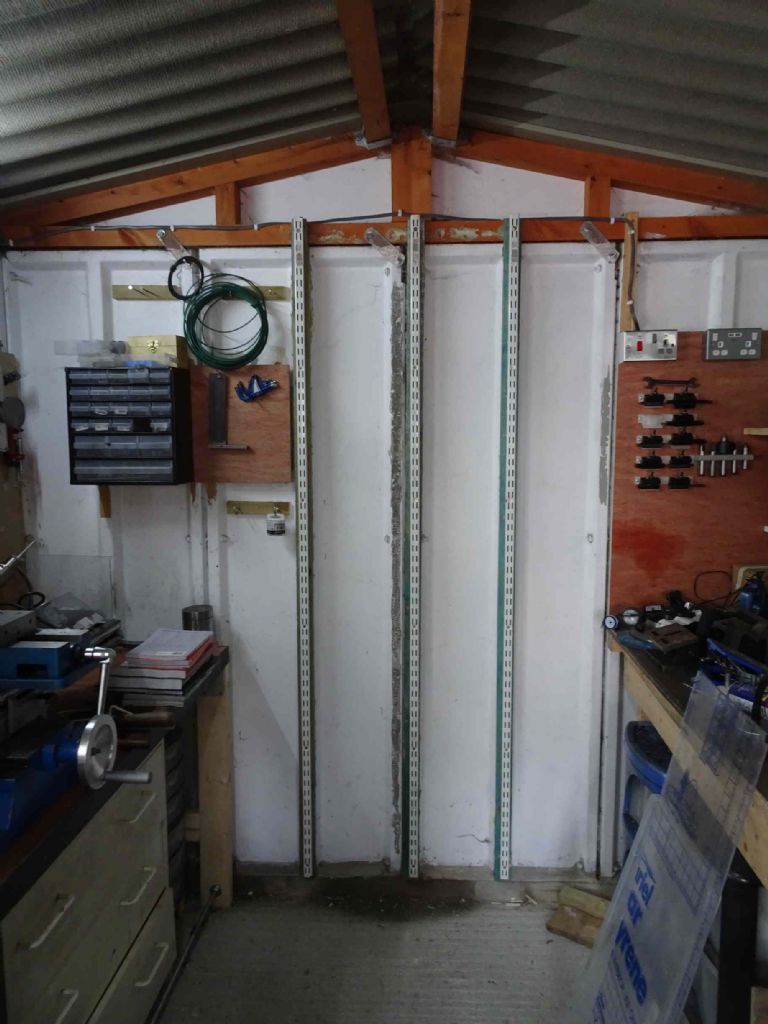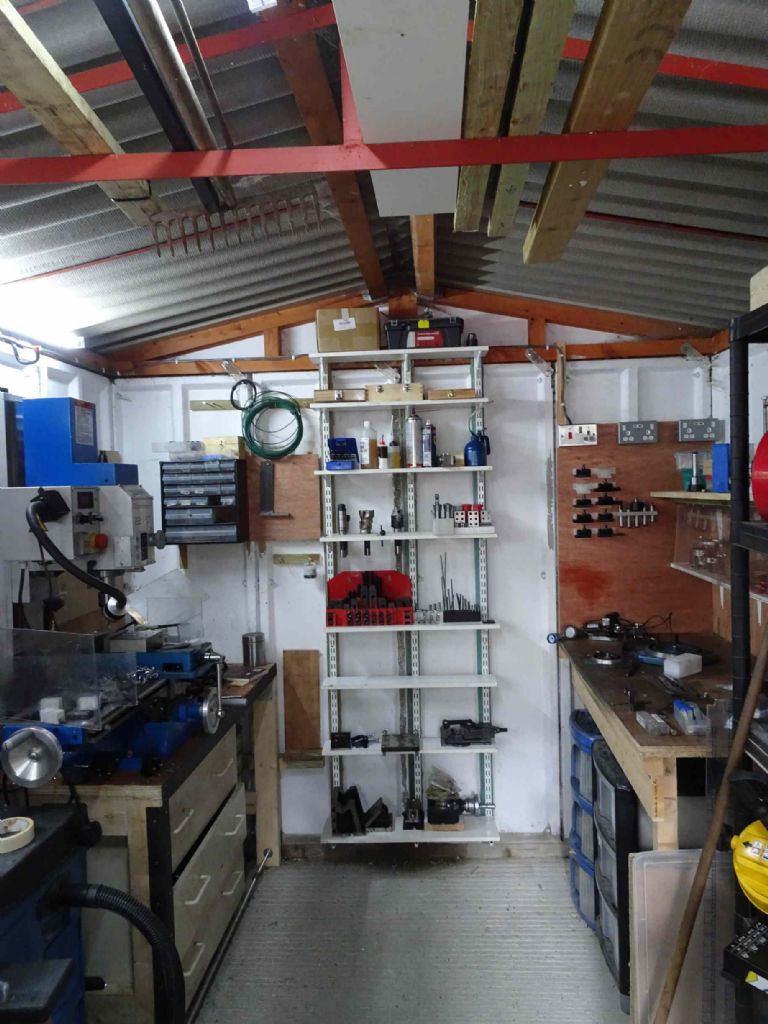Concrete Garages, Shelving and Catastrophe
To put back what came down...
| Sam Longley 1 | 17/06/2020 13:36:33 |
| 965 forum posts 34 photos | Bison Concrete produced over a million concrete garages for local authorities & stopped making them circa early 80's. When they stopped production at Chadwell, They sold the moulds, for peanuts, to Thurrock Concrete Ltd. who rented part of my builders yard. They then made spare parts for damaged Bison garages for LAs, which was a clever move as it was cheaper than replacing a full garage. They did not use rebar as such but prestressed the sections with 1/4 inch diameter HT steel "wire". the pre stressing operation was quite technical & the one operation that the owner himself always insisted on doing. A broken overstressed wire, or errant anchor collet, could fly out many yards like an arrow. with serious consequences. They always advised customers NOT to cut any pre stressing wires because, although they were held in set concrete they could pull back a little causing pieces of concrete to shatter outwards. Drilling a concrete panel can sometimes result in a long crack along the line of the wire, resulting in erosion of the wire at some later date. I imagine that modern garages are made using the same method Edited By Sam Longley 1 on 17/06/2020 13:45:37 |
| Lee Rogers | 17/06/2020 13:42:58 |
203 forum posts | aluminiumwarehouse.co.uk I have used thier easyfix system of square tube to make racking , a cold frame and shelves. Adding a strategic riveted plate on some corners can be done for a bit of extra rigidity but not always needed. |
| ega | 17/06/2020 14:04:38 |
| 2805 forum posts 219 photos | Sam Longley 1: Your post about Bison was very interesting to me. I owned a couple of these many years ago and installed a bench across the end of one supported on timbers bolted through the concrete panels. It seems that I was lucky not to have any problems of the kind you describe. IIRC, these garages were normally available as singles but they could be lengthened by the addition of the modular panels which meant that there could be room for a small car and a modest workspace. |
| not done it yet | 17/06/2020 14:07:38 |
| 7517 forum posts 20 photos | Posted by Circlip on 17/06/2020 10:21:50:
Made hangers that go over the top edge thickness (Like the ones the roof bars use) with a packer at the bottom to ensure they sit vertical. Was advised by Garage fitters NOT to drill into concrete walls as it could burst the panel. There is a difference in the concrete used for garage panels. There is a reason any holes for fixings are cast in at manufacture.
Regards Ian. The reason for holes being positioned at manufacture is simply to avoid the erector having to do more than bolt things together and ensure those necessary holes line up! Concrete has good compressive strength but poor in tension - either when drilling thin unsupported sections or affixing things to them. If parts do not line up, wedges or spacers (shims) are fitted wherever needed. The centre area of panels are much thinner to keep weight (and cost) down, which is why I said I would fix between the vertical joints, from the outside. All the concrete sections of my garage were pre-tensioned with reinforcing wires, not larger diameter rebar. IIRC, as visitors, we were not allowed near the pre-tensioned moulds when on site at the local precast concrete works - these were wires stretched over a distance of about 100-150m for railway ‘sleepers’ with several hundred tonnes of tensioning force applied over that length of moulds. Concrete was the usual 40N/mm^2 mix. I expect the sections of my garage are of similar compressive strength. Structures with smaller panels, fitted between slotted uprights, would have been made like paving slabs - simpler (possibly unreinforced) pressed moulding methods. Those types should definitely not be drilled - either into, or through! Edited By not done it yet on 17/06/2020 14:10:01 |
| old mart | 17/06/2020 14:50:23 |
| 4655 forum posts 304 photos | SDS works well in concrete, but will not drill through reinforcing rods. You may have to use a hss drill without any hammer for them. This will ruin the tip of any hss drill, so don't use your best one. As the glue stayed on the concrete, it might be best to glue on some wood that is the full length and width of the straight part of the concrete. Maybe some kind of wood treatment caused the bond to fail at the wood face. A rough surface on the wood would give a better bond. Edited By old mart on 17/06/2020 14:55:35 |
| Iain Downs | 17/06/2020 20:17:16 |
| 976 forum posts 805 photos | Thanks for all the advice. I did take some pictures to show locations, but I've left the phone upstairs during the just past yoga groaning session. In place here is a terrible drawing Yes. Someone who still uses paint! Shed is around 8 foot by 16 foot. The pre-collapse shelves were on a spur uprights on 38x22mm batons. Most were 5 inch wide with the bottom two or three being 8 inches. Even with the mill table fully to the right I can easily get to the wheel. I've emulated some racks with some bits of across the shed where a rack would be timber (the offending batons!) and I simply wouldn't be able to get my hands on the wheel (without the yoga being a lot more successful than I expect, anyway!). I couldn't see any racking less than a foot deep and although I could make some up from bits of dexion equivalent, it's not cheap and I'd rather spend my money on tooling and raw materials. I had a chat today with my neighbour and builder who's doing his house up two doors down. As well as suggesting a solution he also gave me some materials to accomplish it (I've got 2 15 foot batons (just) sitting in my shed). The basic idea is to glue the batons to the ribs as before, but extend them up to the wood frame above the concrete and screw the spur through the batons into the 3x3 at the top. This means I'll have a decent support at the top of the structure with continuity all the way down. I'm still planning on roughly up the batons on the glue side (the glue stuck very well to the concrete) to help it. Also planning to get some more pressure on them whilst the glue sets, though the exact mechanism isnt' too clear to me yet. I think this will be safe, but I will keep my ears open for creaks as I mill and be prepared to bound out of the way. Also to minimise any hard things which sit above head height. I appreciate all the input!
Iain |
| Keith Matheson | 18/06/2020 21:33:17 |
| 43 forum posts 20 photos | I had a similar issue. The concrete is as hard as nails. If the sectional garage is the same as mine you will see the sections are bolted in place. Buy some threaded bar/rod and replace the bolt with a longer length of Threaded bar. Have the longer end poking inside. Buy some large sheets of wood and dill holes in line with your sticking out studs. Run a penny washer and nut to secure the panel. Continue until your wallet squeaks. Fix brackets etc to panel. If you are willing to loose some internal volume insert some insulation in the sandwich. Hope that makes sense keith MM |
| Iain Downs | 21/06/2020 18:59:05 |
| 976 forum posts 805 photos | So here is the result of my deliberations and your help. The end wall with batons reaching the horizontal supports for the roof. This time I put batons across at the bottom and middle to apply pressure to the glue. Batons at the top fixed with a shortish screw. Shortish screws removed and spur uprights screwed in And after a couple of days to make sure it sets, the shelves added and filled. This led to an uncharacteristic organising spree. But we all have failings.
Iain |
| Dave Halford | 21/06/2020 19:03:48 |
| 2536 forum posts 24 photos | Doesn't that roof get a little damp? |
| Taz Meadows | 01/07/2020 19:26:49 |
| 3 forum posts | When it stops driling sometimes you hit steel regains the drill like a metal drill and turn the hammer off
|
Please login to post a reply.
Want the latest issue of Model Engineer or Model Engineers' Workshop? Use our magazine locator links to find your nearest stockist!
Sign up to our newsletter and get a free digital issue.
You can unsubscribe at anytime. View our privacy policy at www.mortons.co.uk/privacy
- hemingway ball turner
04/07/2025 14:40:26 - *Oct 2023: FORUM MIGRATION TIMELINE*
05/10/2023 07:57:11 - Making ER11 collet chuck
05/10/2023 07:56:24 - What did you do today? 2023
05/10/2023 07:25:01 - Orrery
05/10/2023 06:00:41 - Wera hand-tools
05/10/2023 05:47:07 - New member
05/10/2023 04:40:11 - Problems with external pot on at1 vfd
05/10/2023 00:06:32 - Drain plug
04/10/2023 23:36:17 - digi phase converter for 10 machines.....
04/10/2023 23:13:48 - More Latest Posts...
- View All Topics
- Reeves** - Rebuilt Royal Scot by Martin Evans
by John Broughton
£300.00 - BRITANNIA 5" GAUGE James Perrier
by Jon Seabright 1
£2,500.00 - Drill Grinder - for restoration
by Nigel Graham 2
£0.00 - WARCO WM18 MILLING MACHINE
by Alex Chudley
£1,200.00 - MYFORD SUPER 7 LATHE
by Alex Chudley
£2,000.00 - More "For Sale" Ads...
- D1-3 backplate
by Michael Horley
Price Not Specified - fixed steady for a Colchester bantam mark1 800
by George Jervis
Price Not Specified - lbsc pansy
by JACK SIDEBOTHAM
Price Not Specified - Pratt Burnerd multifit chuck key.
by Tim Riome
Price Not Specified - BANDSAW BLADE WELDER
by HUGH
Price Not Specified - More "Wanted" Ads...
Do you want to contact the Model Engineer and Model Engineers' Workshop team?
You can contact us by phone, mail or email about the magazines including becoming a contributor, submitting reader's letters or making queries about articles. You can also get in touch about this website, advertising or other general issues.
Click THIS LINK for full contact details.
For subscription issues please see THIS LINK.
Model Engineer Magazine
- Percival Marshall
- M.E. History
- LittleLEC
- M.E. Clock
ME Workshop
- An Adcock
- & Shipley
- Horizontal
- Mill
Subscribe Now
- Great savings
- Delivered to your door
Pre-order your copy!
- Delivered to your doorstep!
- Free UK delivery!














 Register
Register Log-in
Log-in


